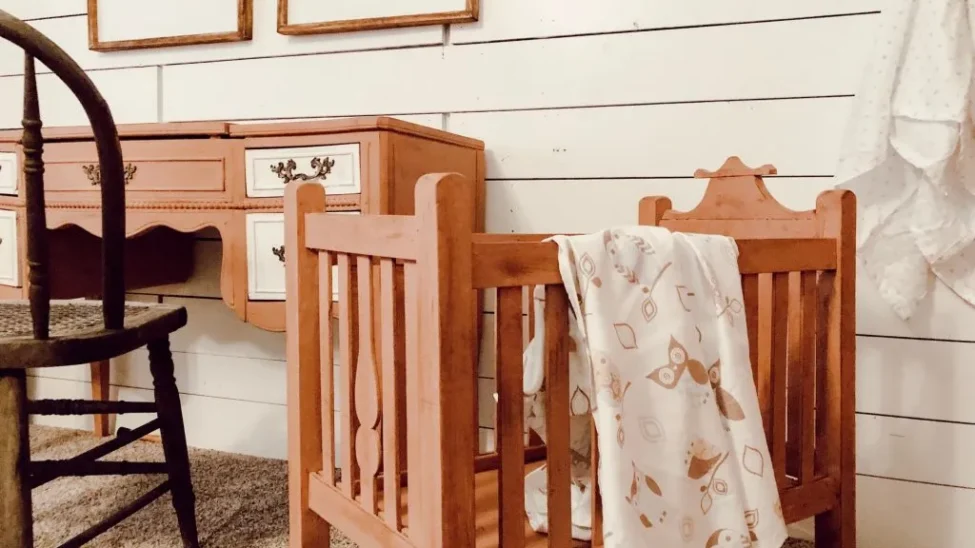
When the crib becomes a new kind of space
There’s this in-between moment when your baby isn’t quite a baby anymore — but also not a full-blown independent toddler either. That’s usually when the crib, once so cozy and confining, starts feeling like a space that needs rethinking. And trust me, I’ve been there. When my daughter first tried to climb out during naptime, I knew something was changing. That crib, which had cradled her through countless nights, needed to evolve — just like she was.
Transitioning a baby into toddlerhood is less about furniture and more about recognizing new emotional and physical needs.
This shift often catches us off guard. One day, they’re snuggled up under the mobile, the next they’re pointing at their toy basket and saying “mine.” So the crib setup? It’s not just about putting on a toddler rail. It’s about making the space feel like theirs — open enough for growth, but still close enough to feel safe.
Signs your toddler might be ready for a crib refresh
There’s no magical age when toddlers are “ready,” but there are some real signs you can look out for. My personal cue was when my daughter refused to lie down without her stuffed dog, and insisted it sleep *next to her* — not at the foot of the crib like usual. That little shift in behavior told me she was craving ownership of her sleep space. Other parents I’ve worked with have shared similar moments — some noticed their toddlers fussing during bedtime routines, others saw increased restlessness in the crib.
Here are a few common signs, but don’t worry if your child doesn’t tick every box:
- Climbing or attempting to climb out of the crib
- Refusing to lie down without favorite toys or objects
- Unusual bedtime resistance after sleeping well for months
- Requesting to sleep elsewhere (like your bed or a couch)
These signs aren’t warnings — they’re invitations to rethink what your toddler needs now. It’s not about rushing the transition, but noticing when the current setup doesn’t serve them anymore.
Small crib changes that support big toddler steps
When I first adjusted our crib setup, I thought I’d need to buy something new. I didn’t. I just had to change how I used what we already had. Removing one crib side — converting it into a toddler bed — was the first big change. Suddenly, the crib became a space she could enter and exit on her own. That changed the way she thought about sleep. It became something she participated in, not something that was “done to her.”
Giving toddlers a bit of autonomy in their sleep space can reduce bedtime power struggles and boost confidence.
We also simplified the area around the crib. A small step stool for climbing in, her favorite blanket folded right at the edge, and a low nightlight she could reach to turn on. These little things gave her a feeling of control — and control, in toddler language, often equals calm.
One thing I always recommend is anchoring bedtime with a familiar routine. You can make tiny tweaks — like reading next to the crib instead of in the living room — that tell your toddler: “This is your space now.” It’s about creating a rhythm that feels rooted in their new world.
Balancing safety with new freedoms
Letting go of full crib bars can feel scary. I know. The first night my daughter had open access to her bed, I hardly slept. But boundaries don’t disappear — they just shift. I added soft bumpers along the floor, secured any furniture nearby, and made sure the room itself was toddler-proofed. The goal wasn’t to remove limits, but to make them feel natural rather than restrictive.
That’s also where communication steps in. We talked a lot about bedtime, even if I didn’t always get full sentences in return. Toddlers understand so much more than we give them credit for. Explaining what was changing helped ease the transition for both of us.
Making space for independence doesn’t mean letting go of structure — it means offering safe ways to explore.
I often hear from parents that their toddlers started sleeping better once they felt like the space belonged to them. So it’s not about forcing a new crib setup — it’s about inviting your toddler into a new phase with openness and clarity.
What if things don’t go as planned?
Let’s be honest — no matter how well you prepare, toddler transitions rarely follow a script. After three great nights, we had a full meltdown at bedtime. She wanted the crib side back. I considered giving in, and that’s okay. Parenting isn’t about winning — it’s about staying responsive. So we added a few calming elements — a song she chose, a longer snuggle — and slowly, she found her rhythm again.
If your toddler resists the crib transition, pause. You don’t need to push. It’s okay to try again in a week, or a month. The crib doesn’t have to be perfect — it just has to feel like home.
There’s no “right way” — there’s your way, your child’s pace, and the kind of connection that makes sleep feel safe.
Each step in this journey is about learning what helps your little one feel seen, heard, and supported. And yes, sometimes that means taking two steps back to take one forward. But when sleep finally settles in, in that freshly set-up toddler crib? It’s worth every moment of patience.
Sources:


